Memory, longevity and sunflowers
Synopsis : Moving hives in winter, the reduced (or not) longevity of honey bees and the benefits of sunflowers. Surely there’s something that interests you here?
Introduction
Don’t sigh disappointedly and look elsewhere for the definitive post on ”Sexy beesuits for a sizzling summer” or “The 10 best hives tools of 2023” {{1}}. Despite record breaking February weather and my report of early frogspawn, the temperatures have subsequently plummeted, it’s snowed again and the beekeeping season feels as far away as ever.
I’ve therefore got no practical beekeeping to discuss 🙁 .
All I’ve done since last week is blend and jar honey, stare balefully out of the window at the hives (obscured by falling snow) and build frames.
And who wants to read about that?
What’s more, the cold snap isn’t restricted to my isolated corner of Scotland. Whilst I could write about first inspections, or preparing for the OSR, it all feels a bit premature. A decade of observing the page stats here shows that articles are read most when they’re timely. Lots of page views boosts my advertising revenue {{2}} so I want to write timely articles that are extensively read.
I’m therefore going to write about some science(y) stuff instead. You may have seen the headlines associated with one of these studies, but you’re unlikely to have read the article. I had been intending to start a monthly newsletter to cover some of these beekeeping-related topics that were unsuitable for a full post.
‘Unsuitable’ for a variety of reasons; not very interesting but really important, sounds important but probably isn’t, interesting but inconclusive, interesting but wrong etc.
However, I’m too busy to write more than I already do, so instead I’ll periodically have a ’Science snippets’ post and lump a few topics together, prefixed this week with some musings from observations on moving hives.
Something for everyone? … or Nothing for anyone? … time will tell 😉 .
The memory of bees
Before you all disappear to search of that hive tool article I’ll discuss moving hives in winter.
I’m getting some building work done shortly and needed to move four hives to another location.
During the beekeeping season – or, more accurately, when the bees are flying freely – the ’less than three feet and more than three miles’ rule applies when moving hives.
Most beekeepers have heard of this (or a variant thereof). Foragers orientate to the location of the hive, using natural landmarks and their rather elegant homing ability to return to the hive. It’s usually reckoned that bees may travel up to 3 miles while foraging. Typically it is less than this, and scientific studies have shown it can be quite a bit further, but 3 miles is a useful figure to quote.
The final approach is made using a combination of visual and olfactory clues. These are short range. Therefore, if you move the hive a short distance (the ’less than 3 feet’) they’ll still find it, but if you move them more than three miles they will reorientate to the new location and not return to the original site.
None of these distances are precise; they’ll still find the hive if you move it 1 metre (3 feet and 3 inches), and probably won’t return if you move a hive 2.5 miles, but you get the idea.
However, in the winter when the bees are not flying, it’s assumed by many that these rules don’t apply.
And, I’m including myself in the ‘assumed by many’ group.
‘Assumed’ can mean not understood properly 😉
The reasoning goes something like this;
- the temperature is too low for flying and the bees are confined to the hive and have been for weeks.
- bees have small brains with little need for long-term feats of memory (after all most live less than 6 weeks).
- when a winter ‘flying day’ does occur, they will refresh their memory of the hive location, effectively taking an orientation flight. Reinforcement occurs on successive winter flying days, even if these are mainly for cleansing flights or water collection.
Therefore, after a prolonged period of low temperatures with no flying days, you can safely move hives intermediate distances (between 3 feet and 3 miles) without risking bees returning to the original location when the weather does warm.
So that’s what I did.
The bees had been flying well on the 20th of December (12°C) but I’d seen no bees flying in January or early February. We’d had only three or four days during that period when the temperature (just) exceeded 9°C, but accompanied by a lot of rain as well.
In mid-February (the 14th) I moved the hives about 50 metres to the new site. I was careful to not disturb the cluster and left the entrance sealed for 30 minutes after moving the boxes. No bees flew when I removed the entrance blocks.
On the 25th the sun came out for an hour or two and so did the bees 🙂 .
And, although the majority went on what clearly looked like orientation flights, a couple of hundred returned to their original location by the shed. I fear these perished as the temperature dived to ~4°C when the sun disappeared and there was frost by evening.
(Some) winter bees have quite long term memory
Whilst obviously individually tragic, the loss of a few hundred bees isn’t going to jeopardise the moved hives, though I’d prefer not to lose any. A subsequent quick peak when topping up the fondant showed that they are well populated and doing well.
Had I done the same move in the summer there would have been thousands of bees milling around the original site by the shed. But this is winter and the winter bees that now populate the hives have mostly been in residence for months.
So, during their incarceration, the majority of winter bees appear to have forgotten the original location … but not all of them.
How long had they been incarcerated?
Eight weeks had elapsed between the 20th of December and the day I moved the hives. I first saw bees flying 11 days later, so almost 10 weeks in total. I may have missed bees flying within that period, but the original site was within 10 metres of the back door and in full view. The weather has been poor and I’ve been working outside when it was even vaguely reasonable.
My searches of the scientific literature failed to turn up anything on the long-term memory of winter bees. There are some interesting observations by Vyas et al., (2021) on ‘long term’ memory but these are of summer foragers and feeder locations. Vyas’s definition of ‘long term’ in this study is only 7 days.
Unanswered questions
Lots of bees were flying on the 25th. However, only a small proportion returned to the ‘wrong’ location.
Why do only a subset of winter bees retain the memory of the original location? Are these the youngest winter bees, or just those that made the last flights from the old site?
Or perhaps they are the oldest and made the most return flights to the original site? Reinforcement is known to help train bees to remember geographic locations.
The colonies are rearing brood, but not a huge amount. Some of the orientating bees on the 25th were likely to be new workers, but the population of winter bees will still greatly exceed the few hundred that were ’missing in action’ on the first flying day in weeks.
On subsequent flying days I’ve not seen any more bees around the original hive location. This further reinforces my view that the flight on the 25th was the first for weeks.
Could I have moved the colonies without losing these bees?
Not easily.
If winter bees have long memories the summer trick of moving them away for three weeks (during which time all the current foragers die) and then moving them back wouldn’t work. However, the alternative, moving them a metre at a time, down a steep rocky slope, was both wildly impractical and stupidly reckless {{3}}.
Bees are living half as long as they used to
This paper made quite a splash and got a lot of mentions in the popular press. Two or three readers emailed me about it, either to bring it to my attention or ask whether it was the cause of their lost colonies.
It’s almost certain the reason they had lost colonies this winter is Varroa … it always is {{4}}.
The title of the study (by Nearman and van Englesdorp, 2022) is a bit convoluted … ’Water provisioning increases caged worker bee lifespan and caged worker bees are living half as long as observed 50 years ago’.
The second claim, ‘living half as long’ was – unsurprisingly – the one that captured everyone’s attention. Since it’s widely stated that bees are threatened with extinction (they’re not) and are declining (they’re not) then perhaps the simple fact that they’re ’turning up their tarsi’ {{5}} twice as fast as they did five decades ago explains everything.
Perhaps.
I suspect the authors were studying something else completely and realised, possibly when looking at controls, that bees given syrup and water did better in laboratory cages than those just given syrup. They then checked the literature to work out if this differential ‘better’ has always been the case … only to discover that ‘better’ in the 1970’s was twice as long as ‘better’ in the 2020’s.
Or something like that.
It’s not unusual to start studying one thing and end up publishing something different {{6}}.
The longevity of caged bees and the productivity of colonies
If you want to study the effect of pesticides, viruses or whatever else on bees you have the choice of:
- doing observational science of bees in a hive i.e. count or otherwise measure things about the hive and determine whether the pesticide, virus, whatever is present/absent, and at what level. Then look for correlations.
- conducting lab-base experiments with bees in cages, subjected to different amounts of pesticides, viruses or whatever. Is there a dose-response? Do more ‘whatevers’ help or hinder the bees?
And it’s the latter type of study that Nearmann and van Englesdorp were doing. The newly emerged bees were kept in plastic food trays in an incubator.
Having worked out that their bees had a median lifespan of ~21 days they then looked at 46 published studies since 1970 where the median survival was determined using caged bees. The lifespans decreased from ~34 days in 1970 to only ~18 days in 2019.
Interesting.
If foragers are living less long it would be expected that honey yields would be reduced because colonies would be smaller (and so less productive).
Have honey yields reduced over the last 50 years?
Fortunately, these sorts of things were recorded by the National Agriculture Statistic Service (NASS) in the USA since 1987.
There was a positive correlation between the measured or predicted worker lifespan and the honey yield per colony.
Correlation does not mean causation, but it’s certainly interesting that yields per colony appear to reduce as the lifespan of the worker bees gets shorter.
The authors also did a bunch of in silico modelling using BEEHAVE but I’m going to skip this bit and instead focus on the ‘simple’ factors of longevity and the amount of honey produced.
Comparing ‘like with like’
The comparisons of 1970’s bee longevity with bees from the 21st century are valid if the studies are conducted in the same way. They probably were not. The upper graph above shows that pre-1990 studies tended to include more bees per cage (larger blobs) and the authors acknowledge that this influences worker longevity.
But what were the bees caged in? These days we use sandwich boxes, or (unused!) carry-out food containers. In the 70’s the cages would have almost certainly been wood with net or mesh sides. Sometimes these things would be documented in the materials and methods, but often they are omitted and researchers just assume everyone knows you keep bees in a certain cage type (forgetting that the study might only become interesting 50 years later).
So I’m pretty sceptical that the longevity reductions are truly based upon a like for like comparison. I’m also a bit wary of the large number of 1970’s studies that report extreme longevity of workers (>40 days).
The median longevity of bees might be decreasing, but I’d want to see some of the early studies reproduced in exactly the same way to have more confidence.
What about the honey yields?
The figures quotes are almost certainly from commercial beekeeping operations (remember it was NASS that were collecting them). To make more money, commercial beekeepers need big, strong hives.
However, to make even more money (and it’s probably still not a lot 🙁 ), beefarmers increasingly split the colonies and ship them off to California in February for almond pollination. Almond acreage has probably more than quadrupled since 1990, so needing more hives. Payment is per hive, so more moderate sized colonies generates more revenue than fewer large colonies.
Common sense
This paper was discussed quite widely on the Bee-L scientific discussion group. It’s worth a read to see the range of views expressed. I think it’s fair to say that many contributors were quite sceptical of the conclusions of the paper, or at least of the title.
But before I leave the topic let’s think about a few other factors that could influence things.
What is a direct consequence of reduced longevity of worker bees? Assuming what’s observed in the lab reflects what happens ‘in the field’ (and the absolute figure of 18 days suggests it isn’t as that’s less than workers stay as hive bees), then the colonies will be smaller.
Are colonies smaller now than they were 25 or 50 years ago? Appreciably smaller? They would be if the worker lifespan was halved.
I think this would have been obvious.
OK, let’s assume the colonies now are about the same size. If the median lifespan of workers is halved the only way the colony could be the same size – whether measured in boxes of bees, or numbers of workers – is if the queen lays a lot more eggs per day.
Again, Bee-L has some limited discussion of this, but I think the consensus of those who have been keeping bees since the 1970’s was that colony size and queen fecundity have not dramatically changed.
Two other things that may have changed in the intervening period are forage availability and pathogen (particularly deformed wing virus) levels. Were these the same?
The paper has a clever title … but I remain to be convinced it shows what the authors think it shows.
The title, like my ‘Sexy beesuits for a sizzling summer’, certainly invites attention, but in the end the reader {{7}} is left a little underwhelmed.
Sunflowers and reduced Varroa levels
By way of a contrast, here’s a recent study that:
- involves whole hive analysis rather than somewhat artificial in vitro studies
- uses current data and a standardised methodology
- you probably have not seen
And which, although I think it’s interesting, may not be quite as good as it sounds, or quite as promising for UK beekeepers as it could be.
Numerous studies have shown that, while the pollen is low in protein, many insects that forage on members of the Asteraceae family (which includes sunflowers, Helianthus annuus) have reduced levels of pathogens and parasites.
Does this also apply to honey bees?
Using a standard analysis method (alcohol wash to measure phoretic mites per 100 bees) the authors (Palmer-Young et al., 2023) measured mite levels in August and September (sunflowers are late flowering) in dozens of apiaries and recorded the acreage of sunflowers within 2 miles, see A below.
There was a correlation; the more sunflowers the bees could forage on, the lower the mite levels.
Which is not quite the same as saying the more sunflowers the bees foraged for pollen on the lower the mite levels.
So they measured the consequences of that as well.
33 colonies across 5 sites were supplemented for 5 weeks in May and June with pollen patties containing wildflower pollen, sunflower pollen or artificial pollen (BeePro). All colonies had low mite levels at the start of the study. After feeding the mite levels were measured again and those fed sunflower pollen patties had the lowest mite levels (B, above), though the differences were not statistically significant.
Sounds promising; what’s happening and should I start getting excited?
I’ve deliberately skipped a lot of the results in the Palmer-Young et al., (2023) study, either because they show no measurable differences – e.g. in virus or Nosema levels – or because they distract from the tempting-looking correlation between low mite levels and foraging on sunflowers.
How might this be explained? What are the possibilities?
There are three obvious explanations – which I’ve presented in the order of likelihood (least to most) as far as I’m concerned:
- sunflower pollen per se or, more likely (as mites don’t eat pollen directly), a secondary metabolite produced from sunflower pollen in bee pupae, is toxic to Varroa
- honey bee pupae reared on sunflower pollen are less nutritious to Varroa – rather than being toxic to the mites, the latter are simply less well fed and so reproduce less well
- colonies feeding on sunflower pollen produce less brood and so Varroa has fewer pupae to reproduce on
Time will tell which of these is correct or if there’s a different explanation altogether. The first would be great as you could purify the toxin and administer it directly, the third would be worrying as weak, poorly fed, colonies in late summer may suffer high overwintering losses (irrespective of the mite levels).
What? You don’t care about the explanation, you just want to plonk your colonies next to acres of sunflowers and reap the benefits?
Fair enough … but there’s another problem. Palmer-Young et al., show that sunflower acreages in the US are steadily declining (by ~2%/annum over the last 4 decades).
Over here in the UK they’re already at very low levels and can’t decline much without disappearing. Most of the country is too cold for sunflowers. Although southern Britain might be able to accommodate 60,000 hectares, only about 600 hectares are actually grown 🙁 .
Note
One final thought on the memory of winter bees (included here as it’s now too late to change the text above). Although I’d not seen any bees flying between the 20th of December and mid-February, I acknowledge I may have missed a few taking cleansing or water flights. Perhaps the only ones that ended up ‘missing in action’ after moving the hives were the few that had flown since December.
It would be interesting, though perhaps a bit cruel, to move winter colonies after known prolonged periods with no flying activity to determine the memory of these diutinus bees. Alternatively, you could mark workers returning from cleansing flights, then subsequently move the hive and see if it is predominantly these workers that end up being misplaced.
But of course that would mean I’d have had to see them flying … and I haven’t.
{{1}}: Both coming soon … subscribe to not miss them.
{{2}}: Ha!
{{3}}: In retrospect, I’m amazed I didn’t try.
{{4}}: Where always means not quite always, but a lot more than everyone thinks … perhaps 80-90% of the time.
{{5}}: Sorry.
{{6}}: Exhibit 1 m’lud, my academic CV.
{{7}}: Or at least this reader.

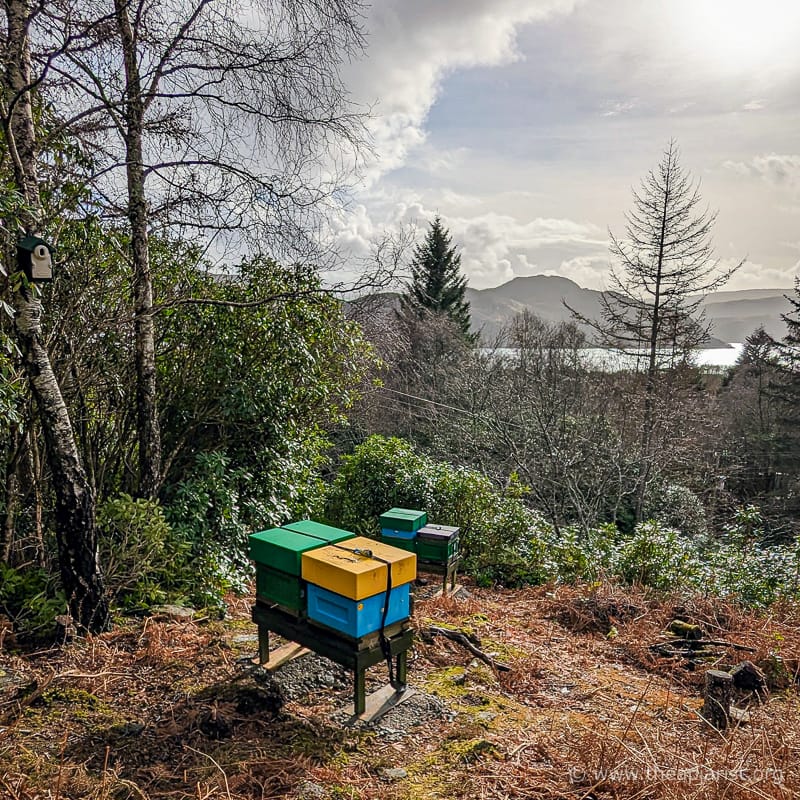
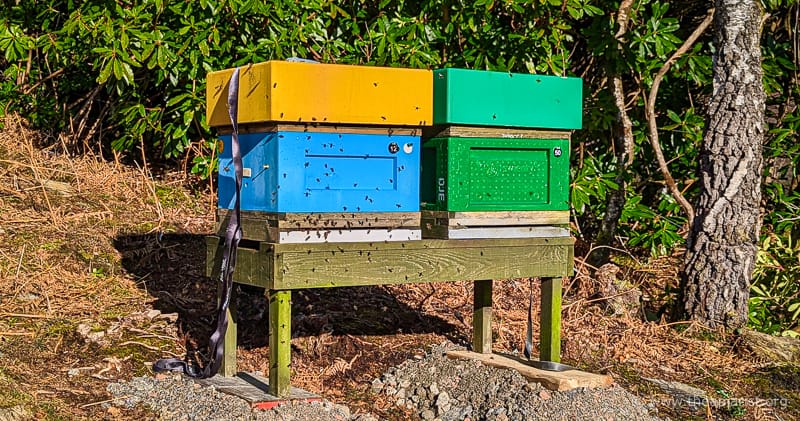
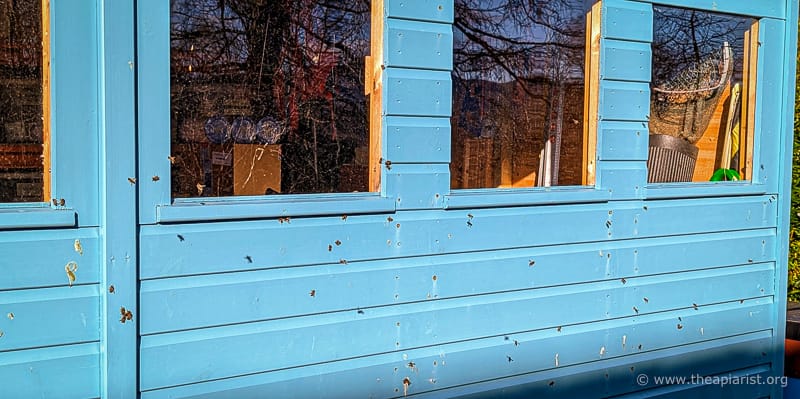

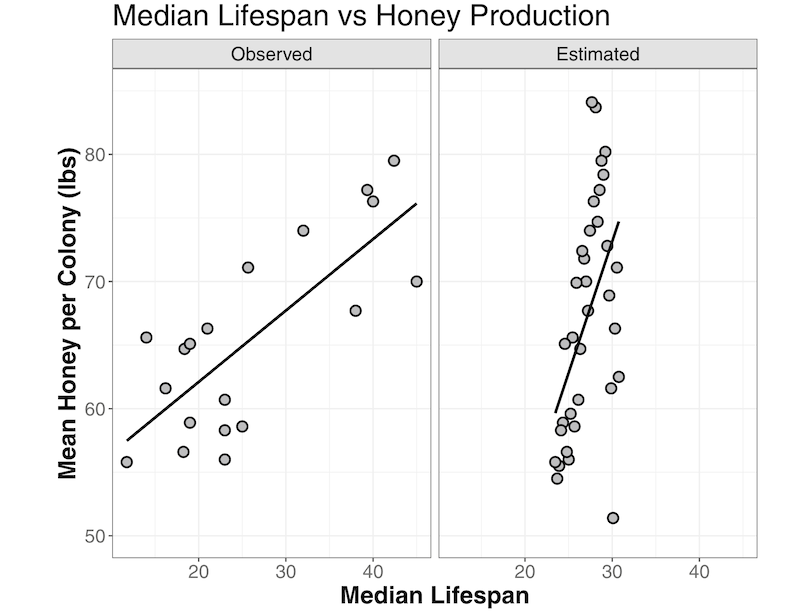

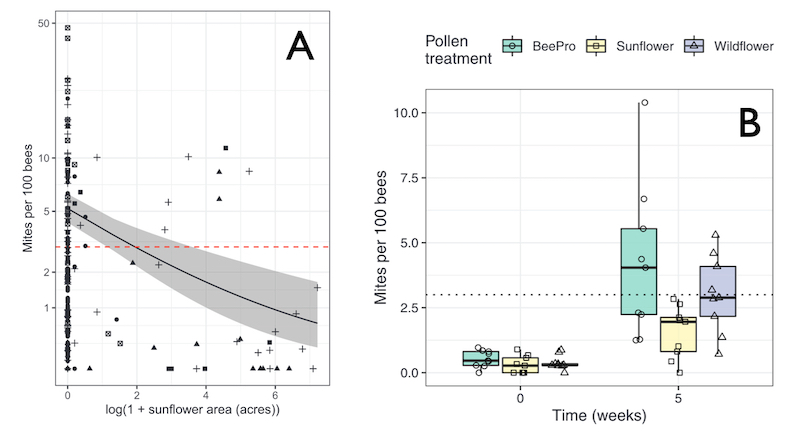
Join the discussion ...